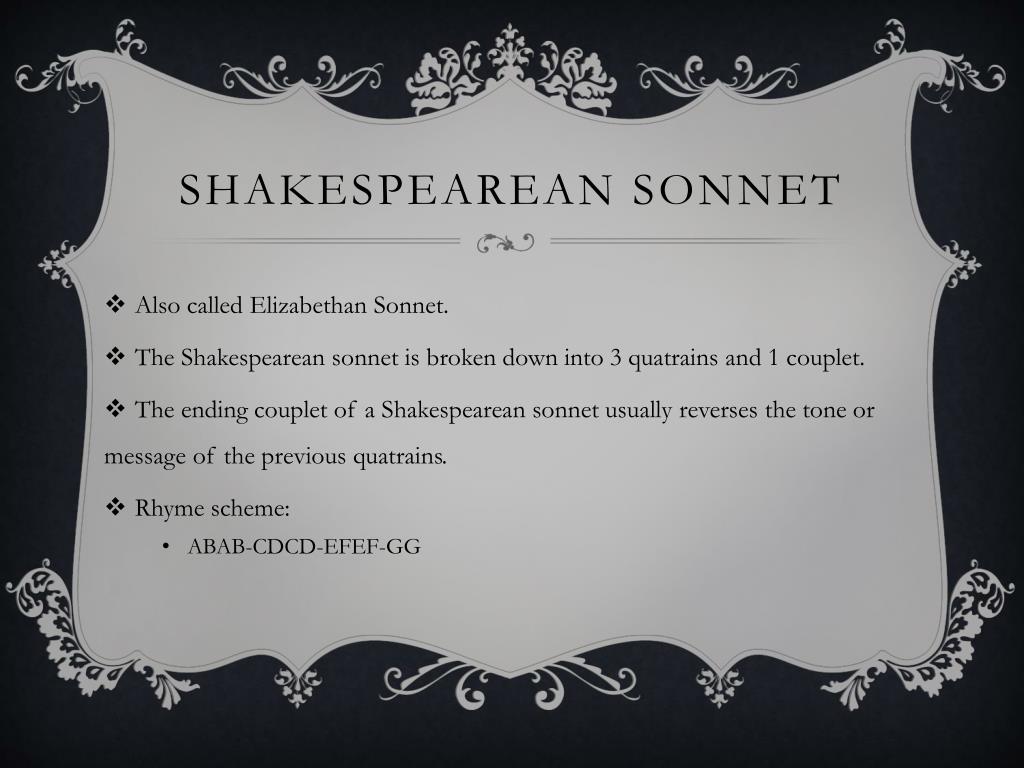
That there hath past away a glory from the earth. The Sestet (the last 6 lines) rhyming variously, but usually cdecde or cdccdc.It is trust excellent resource on shit you dare approach the modern day sonnet.The Octave (the 1st 8 lines) with a rhyme scheme of abba abba.The Octave typically introduces the theme or problem.The convention was also mocked, or adopted for alternative persuasive means by many of the Inn's of Court writers during the Renaissance. The form also gave rise to an 'anti-Petrarchan' convention which may have revealed the mistress to be ugly and unworthy.

As a result, he is often credited for integrating the Petrarchan sonnet into English vernacular tradition. While Howard tended to use the English sonnet form in his own work, reserving the Petrarchan form for his translations of Petrarch, Wyatt made extensive use of the Italian sonnet form in the poems of his that were not translation and adaptation work. Sir Thomas Wyatt and Henry Howard, Earl of Surrey are both known for their translations of Petrarch's sonnets from Italian into English. Whatever the changes made by poets exercising artistic license, no "proper" Italian sonnet has more than five different rhymes in it. These poets do not necessarily restrict themselves to the strict metrical or rhyme schemes of the traditional Petrarchan form some use iambic hexameter, while others do not observe the octave-sestet division created by the traditional rhyme scheme. Poets adopting the Petrarchan sonnet form often adapt the form to their own ends to create various effects. Moreover, Petrarch's own sonnets almost never had a rhyming couplet at the end as this would suggest logical deduction instead of the intended rational correlation of the form. The pair are separate but usually used to reinforce a unified argument - they are often compared to 2 strands of thought organically converging into a single argument, rather than a mechanical deduction. The beginning of the sestet is known as the volta, and it introduces a pronounced change in tone in the sonnet the sestet's purpose as a whole is to make a comment on the problem or to apply a solution to it. It usually does this by introducing the problem within its first quatrain (unified four-line section) and developing it in the second. The octave's purpose is to introduce a problem, express a desire, reflect on reality, or otherwise present a situation that causes doubt or conflict within the speaker. The octave and sestet have special functions in a Petrarchan sonnet. For background on the pre-English sonnet, see Robert Canary's web page, The Continental Origins of the Sonnet.

This form was used in the earliest English sonnets by Wyatt and others. Because of the structure of Italian, the rhyme scheme of the Petrarchan sonnet is more easily satisfied in that language than in English. There are several possibilities for the sestet, including C-D-E-C-D-E ( Italian sestet, C-D-D-E-C-E, C-D-C-D-C-D ( Sicilian sestet), C-D-D-C-E-E, C-D-C-D-E-E ( English sestet), C-D-D-C-C-D (as in Wordsworth's "Nuns Fret Not at Their Convents Narrow Room" poem). The rhyme scheme for the octave is typically that of the Italian octave, A-B-B-A-A-B-B-A.

In this form the sonnet's 14 lines are composed of two parts, an octave (lines 1-8) and a sestet (9-14). Petrarch developed the Italian sonnet form, which is known to this day as the Italian or Petrarchan sonnet or the Italian sonnet.


 0 kommentar(er)
0 kommentar(er)
